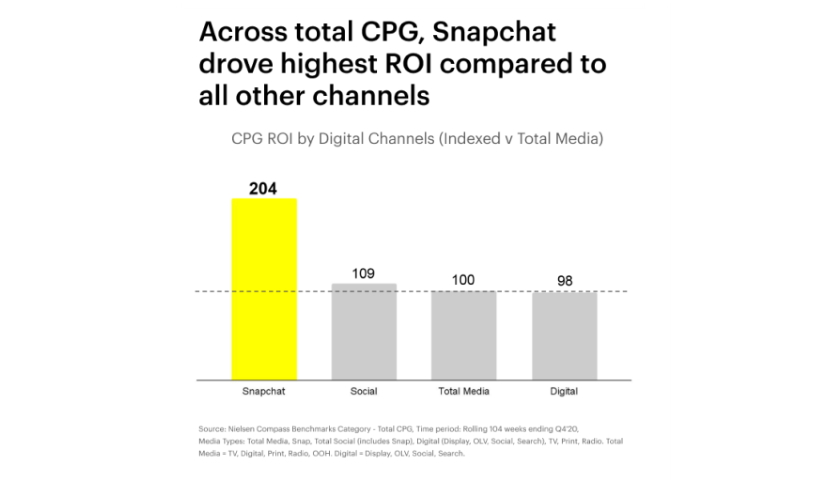Snapchat has published a new research report which uses marketing mix modeling to provide more perspective as to how Snap ads contribute to sales for consumer packaged goods (CPG), and the effectiveness of the platform for CPG brands.
A key challenge in CPG marketing is that as CPG items are purchased both online and in-store, that makes direct attribution from digital campaigns more complex. Marketing mix modeling, which uses point-of-sale information alongside internal and online data points, provides a more accurate view of overall ad impact, which won’t always be as clear from online data alone.
Snap commissioned Nielsen to conduct a series of studies on this, providing a broader view as to how Snapchat Ads helped drive results for advertisers in both the CPG and Beauty categories in the US.
As explained by Snap:
“First, we analyzed return on investment (ROI) benchmarks using Nielsen Compass’s MMM Normative Benchmarking database for rolling 104-week benchmarks in Q4 2020 as well as the previous two quarters of back data. Then, we selected a representative set of five US advertisers within the Personal Care and Beauty vertical, and Nielsen constructed an aggregated dataset of each advertiser’s sales, Snapchat ad spend, ad spend on television, and spend on other digital channels using their Ad Intel dataset, pricing information, and other variables.”
So it’s not a massive, comparative data set, given it’s been narrowed down to five advertisers. But still, the results do indicate that Snap ads can be very effective for CPG brands in maximizing reach and resonance for their products.
First off, based on Nielsen’s benchmarking database, the results show that Snap Ads generated double the return on investment compared to overall media, social, and digital benchmarks.
Read more here: socialmediatoday.com





